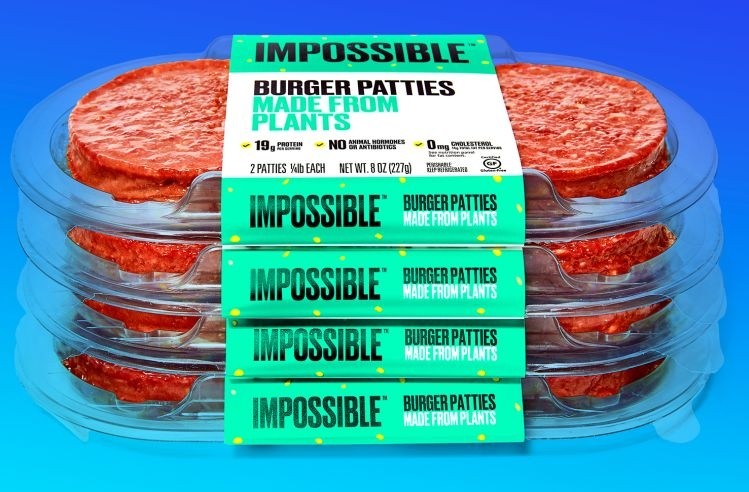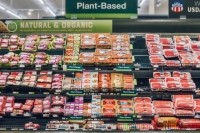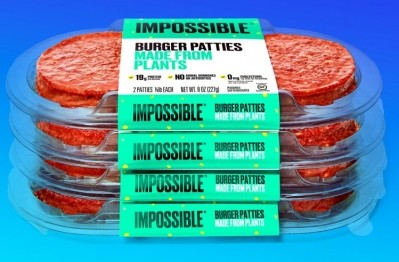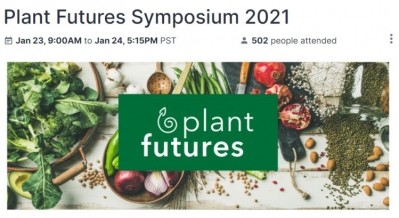Impossible Foods slashes foodservice prices again, despite ‘skyrocketing’ demand: ‘It’s the first cut of 2021 but it won’t be the last’

By cutting prices to US foodservice distributors by a further 15% (on top of a similar cut in 2020), Impossible Foods prices are now below those of premium, organic and grass-fed beef, although they are still around twice that of 90:10 beef and over three times that of 80:20 ground beef, which accounts for the majority of the market, chief communications officer Rachel Konrad told FoodNavigator-USA.
The company – which is also lowering prices to foodservice distributors in Canada, Singapore, Hong Kong and Macau in the double digits – has long sought to reach price parity with conventional meat, at which point, all other things being equal, making the switch would be a no brainer for consumers, said Konrad, who said we can expect further cuts this year.
“This is something we’ve baked into our strategy and financials for years. Our entire goal is to undercut the price of conventional, commodity ground beef from cows. It’s the first cut of 2021 but it won’t be the last. We know that people love the taste of our product and repeat rates are good when people try it, but price is still a barrier to trial.”
While COVID-19 has presented significant challenges to the foodservice market, Impossible Foods has increased its distribution in this segment from around 20,000 to around 30,000 locations over the past year, and over-indexes in fast-food chains with options such as drive-thru and takeout, which have been less impacted by the pandemic.
Its growth in retail, meanwhile, has been even more meteoric, going from around 150 stores to more than 17,000 from Walmart and Kroger to Costco (test markets in the west coast), and Trader Joe’s as retailers accelerated rollout plans as COVID-fueled meat shortages kicked in.
Displacement data
More importantly, said Konrad, velocities have been strong, making Impossible Foods SKUs highly productive for retailers, while credit card data from leading retailers shows that for every dollar consumers spend on Impossible Burgers in their stores, about three-quarters of that comes at the direct expense of animal-based meat.

The direct-to-consumer e-commerce business, launched last summer, has also been growing pretty steadily, said Konrad, who said Impossible Foods had recently launched with Amazon Fresh and Imperfect Foods, and was doing solid business on retail partner sites such as Walmart.com and Kroger.com.
The new product pipeline: milk, steak, fish, eggs
Impossible Foods – which has a stated goal to “produce a full range of meats and dairy products for every cultural region in the world” – recently teased a plant-based milk product “better than anything that comes from a cow,” during a call outlining plans to double the size of the R&D team over the next 12 months.
However it is also working on steak, chicken, seafood, and eggs, said Konrad.
Asked if Impossible Foods planned to emulate plant-based rival Beyond Meat, which is replacing its flagship Beyond Burger with lean and regular versions, Konrad said Impossible Foods was laser focused on going head to head with 80:20 ground beef, which still completely dominates the market, and that “today it wouldn’t make sense for Impossible Foods to bifurcate like this, at least in the short term. Over time, would we be interested? Perhaps.”
Manufacturing capacity and international ambitions
Production has increased six-fold since 2019, both in the company’s main plant in Oakland and at multiple plants owned by co-manufacturing partners, said the company, which has raised well over a billion dollars to build its plant-based empire.
Speaking at FoodNavigator-USA’s plant-based meat in focus webinar in October, CFO David Lee said: “When I started in late 2015 as COO, what kept me up at night was whether our bet on meat eaters would pay off… I don’t worry about that anymore.”
As for Impossible Foods' international ambitions, he said: “We will enter every market and we’ve been hard at work for some time, not just on what you see in the US and in Singapore, Hong Kong, Canada and Macau, but we’ve been hard at work on preparing the path to enter larger markets such as Europe, China and Brazil. And while we’re not giving a specific date, we believe those markets are open to us, and we’re excited to get to them soon.”
'A tsunami of curiosity trial'
Commenting on Impossible's pricing strategy, Dr James Richardson, a cultural anthropologist-turned business consultant to emerging CPG brands, told FoodNavigator-USA that the company is "very wise to accelerate the relaxation of foodservice pricing as they chase the massive 80:20 beef patty market in restaurants."
But he added: "Given that they are now in 17,000 retail stores as well, they would be wise to revisit their pricing strategy here as well. Both trial AND repeat get negatively affected after $100m in trailing annual sales by extreme retail price disparities (200% or more between premium upstarts and commodity giants), especially in 'ingredient' categories headed for the stove/grill for cooking.
"While Impossible claims to have good repeat from their omnivore audience, it’s way too early to know how stable that retail repeat rate is in the long-term for a brand this young. The unicorn-levels of national awareness-building before retail entry have created a tsunami of curiosity trial. The company has also ramped up retail distribution so fast that this trial tsunami clouds any definitive analysis of the business.
"What is more critical to appreciate is that no one has produced a definitive bottoms-up addressable market study of how much of the 80:20 retail beef market is driven by consumers open to anything other than curiosity trial of these otherwise yummy plant-based imitations."
According to SPINS data collected by The Good Food Institute, burgers have the biggest share of the plant-based meat category, followed by sausage links, patties, nuggets, grounds, deli, bacon, and meatballs.
However, in terms of dollar sales growth, the fastest-growing segments are links, grounds, deli meat and meatballs.
Plant-based meat and the Dietary Guidelines for Americans
Plant-based meat, dairy and egg alternatives - an area of significant focus and investment for many food companies - were not really referenced in the new 2020-25 Dietary Guidelines for Americans, although they note that "dietary patterns characterized by higher intake of red and processed meats, sugar-sweetened foods and beverages, and refined grains are… associated with detrimental health outcomes.”
Some “shifts” in protein consumption are also recommended to “add variety," although the guidelines do not address sustainability and do not explicitly promote a shift to more plant-based eating patterns.
For example, say the guidelines, “Replacing processed or high-fat meats (e.g., hot dogs, sausages, bacon) with seafood could help lower intake of saturated fat and sodium, nutrients that are often consumed in excess of recommended limits.
“Replacing processed or high-fat meats with beans, peas, and lentils would have similar benefits, as well as increasing dietary fiber, a dietary component of public health concern.”



















